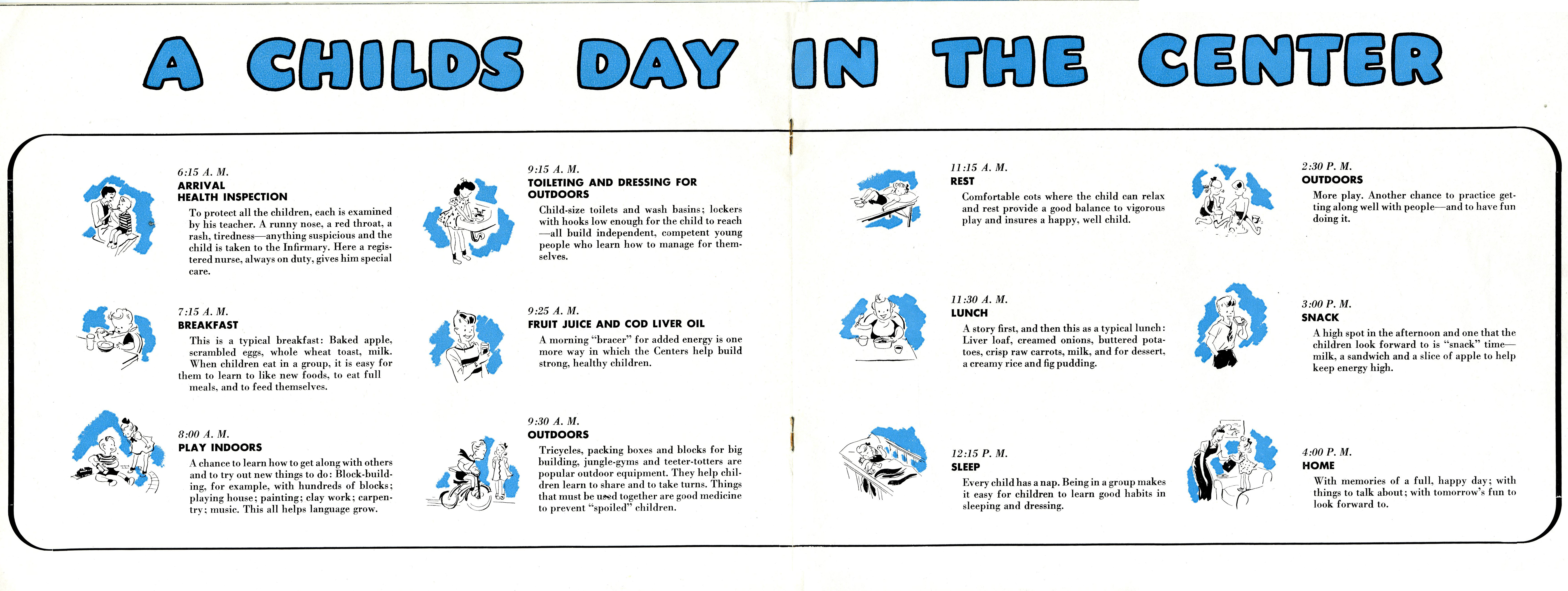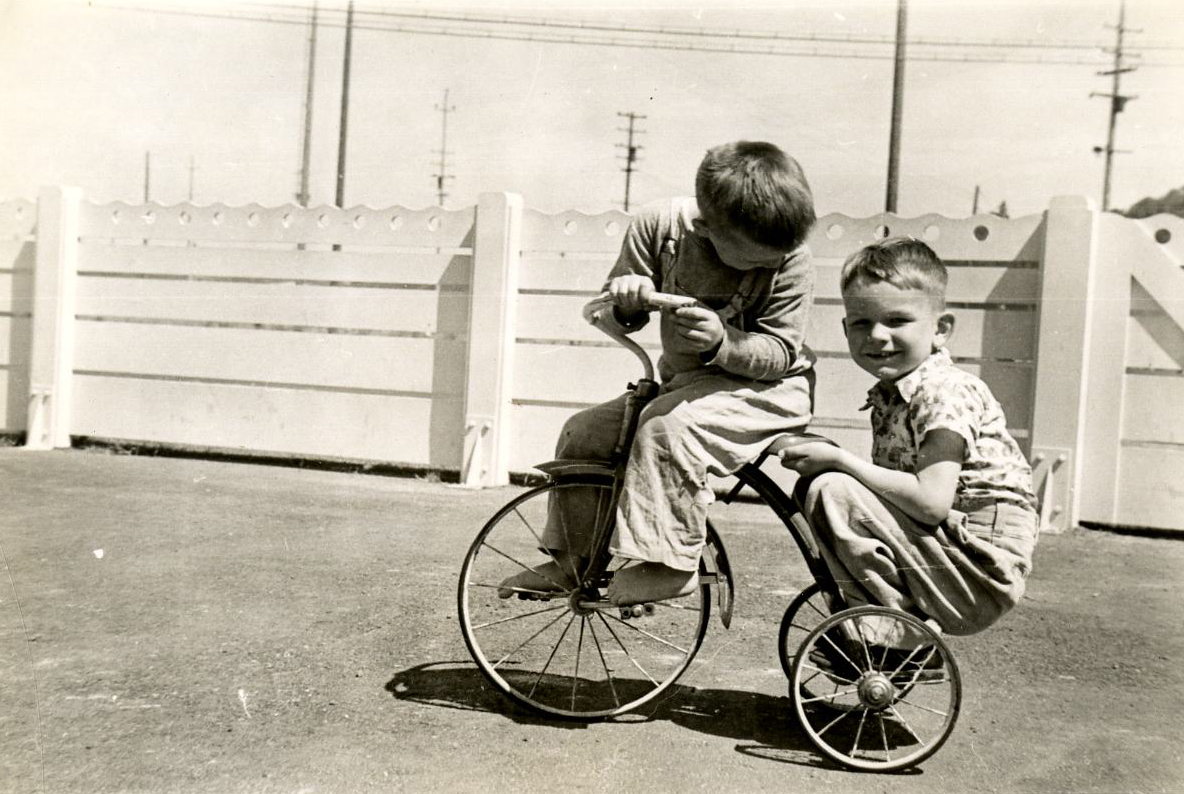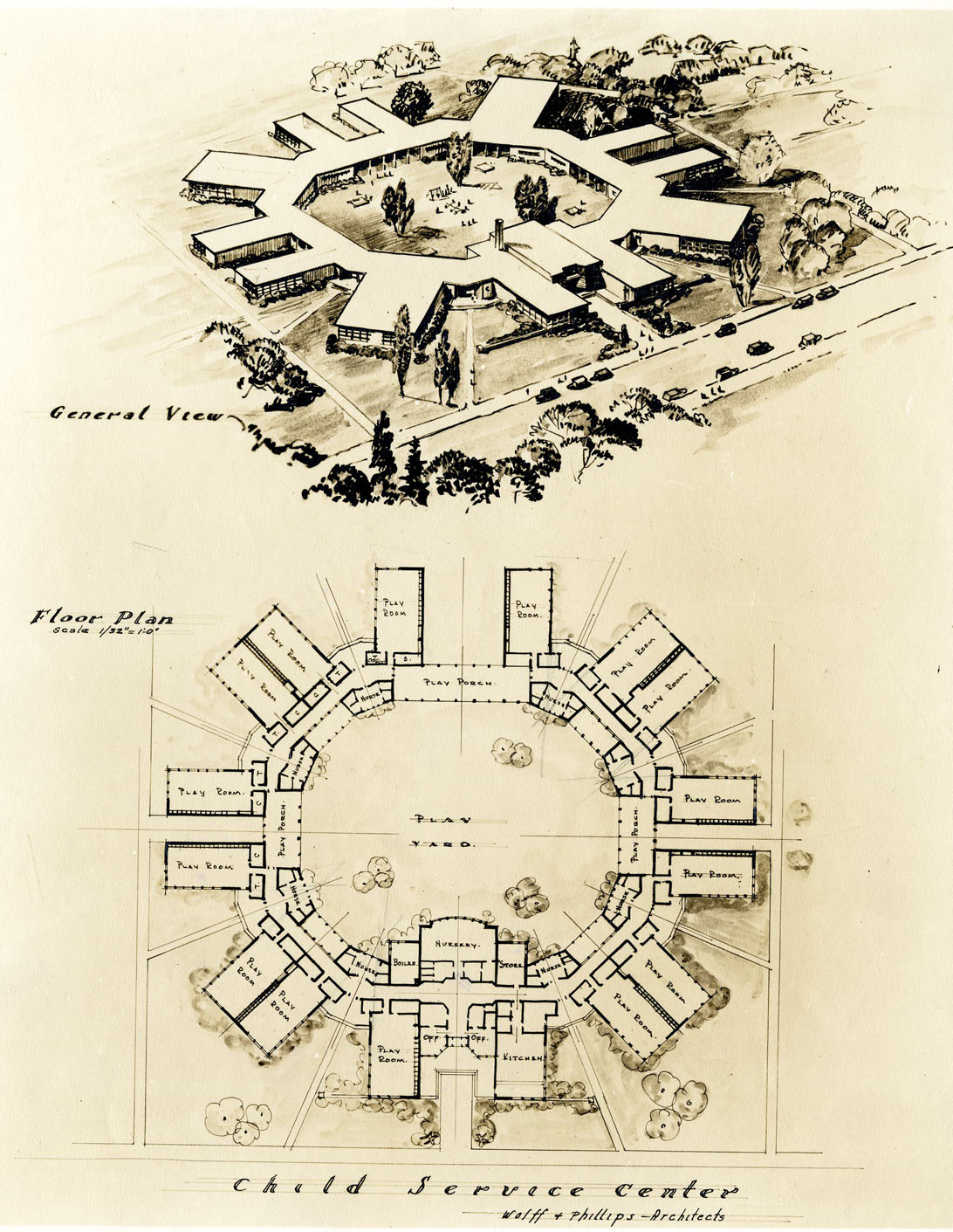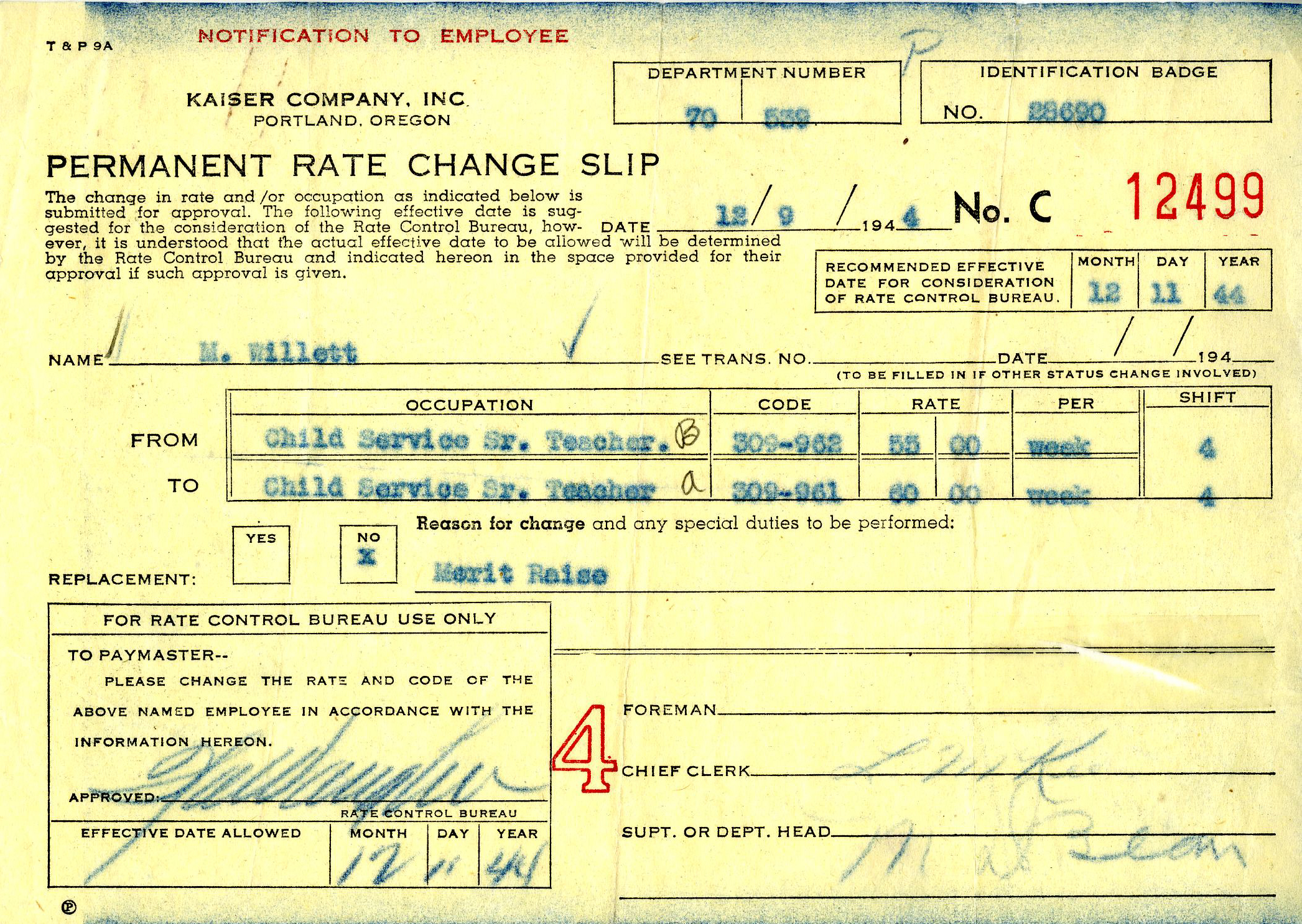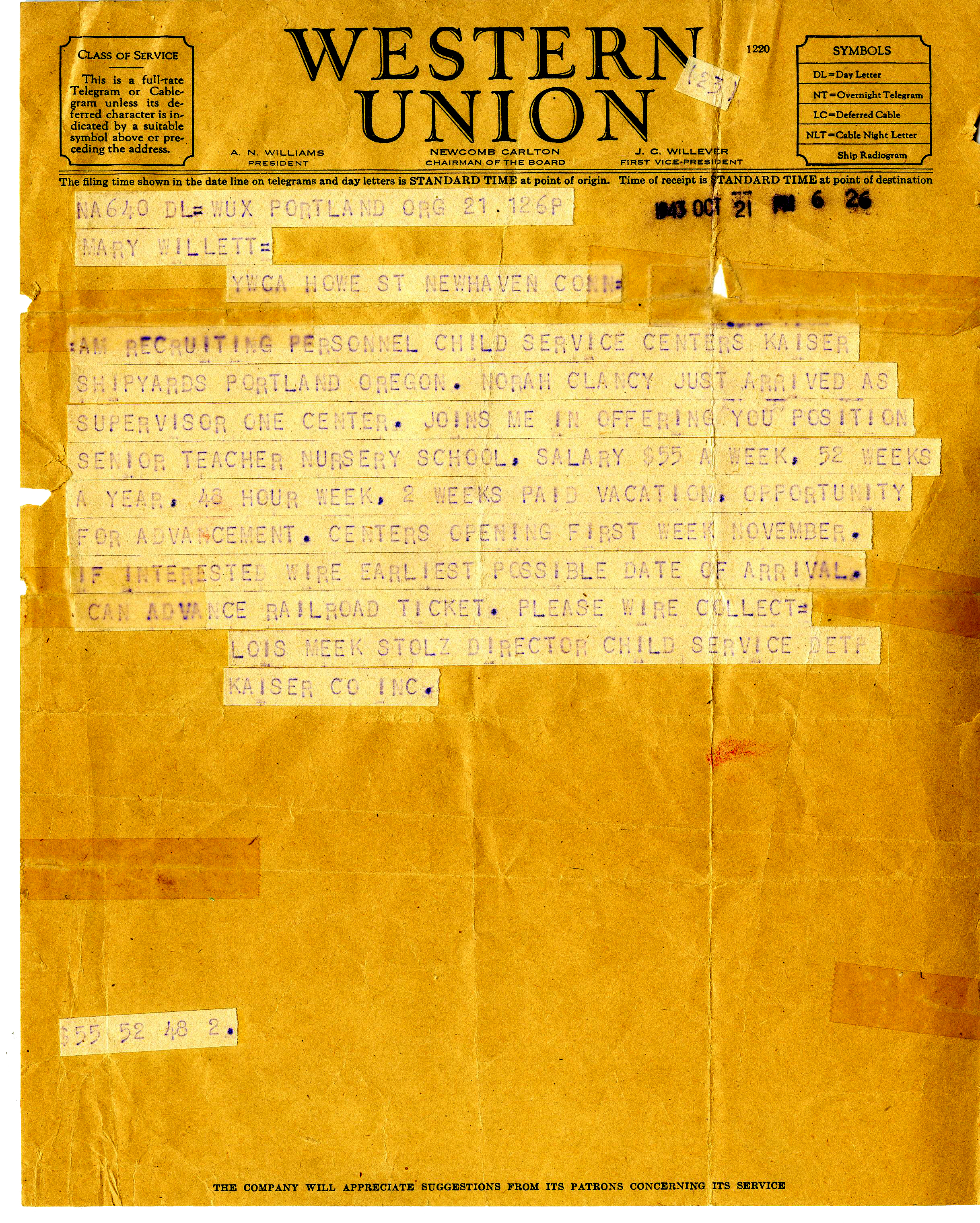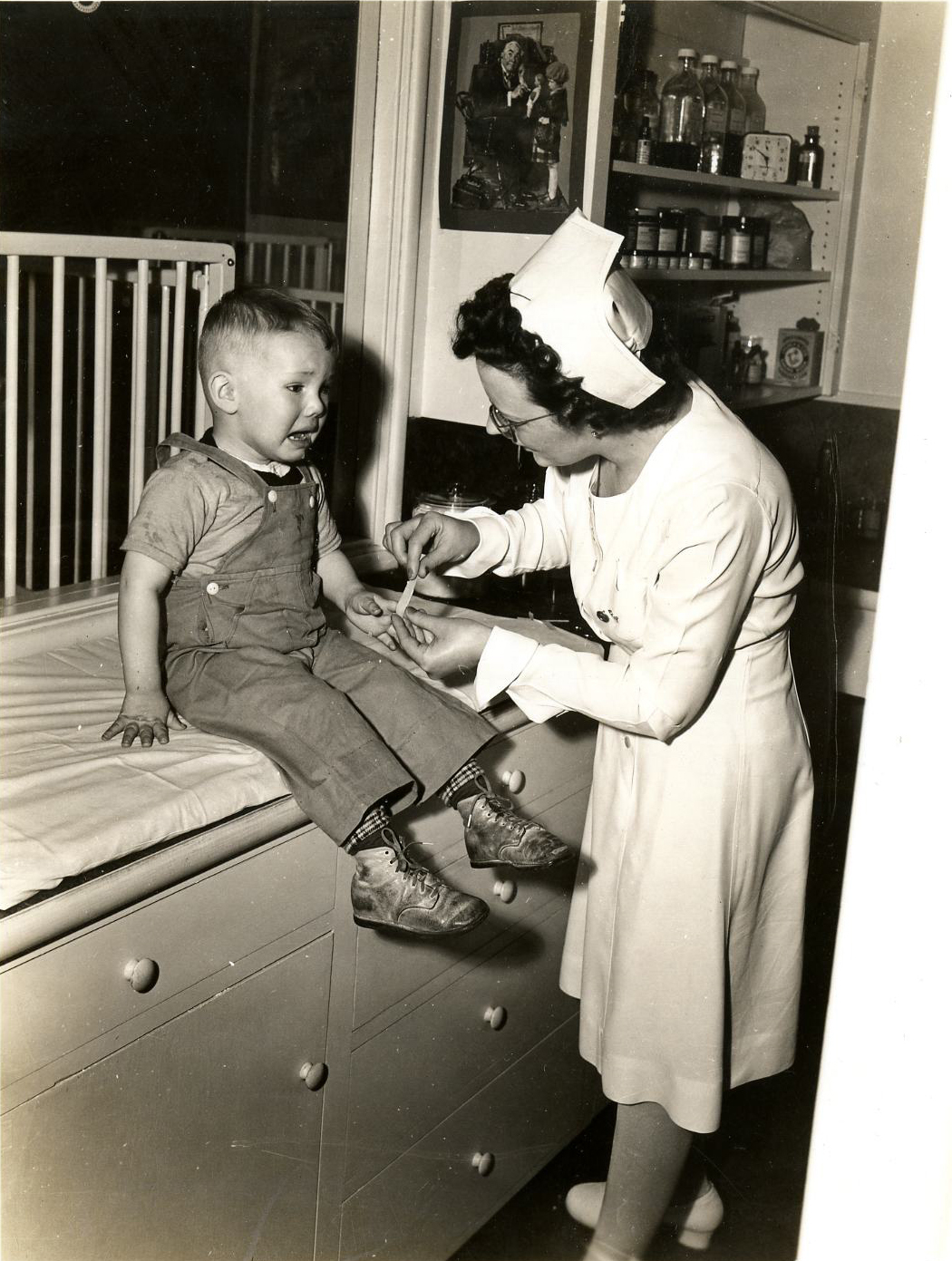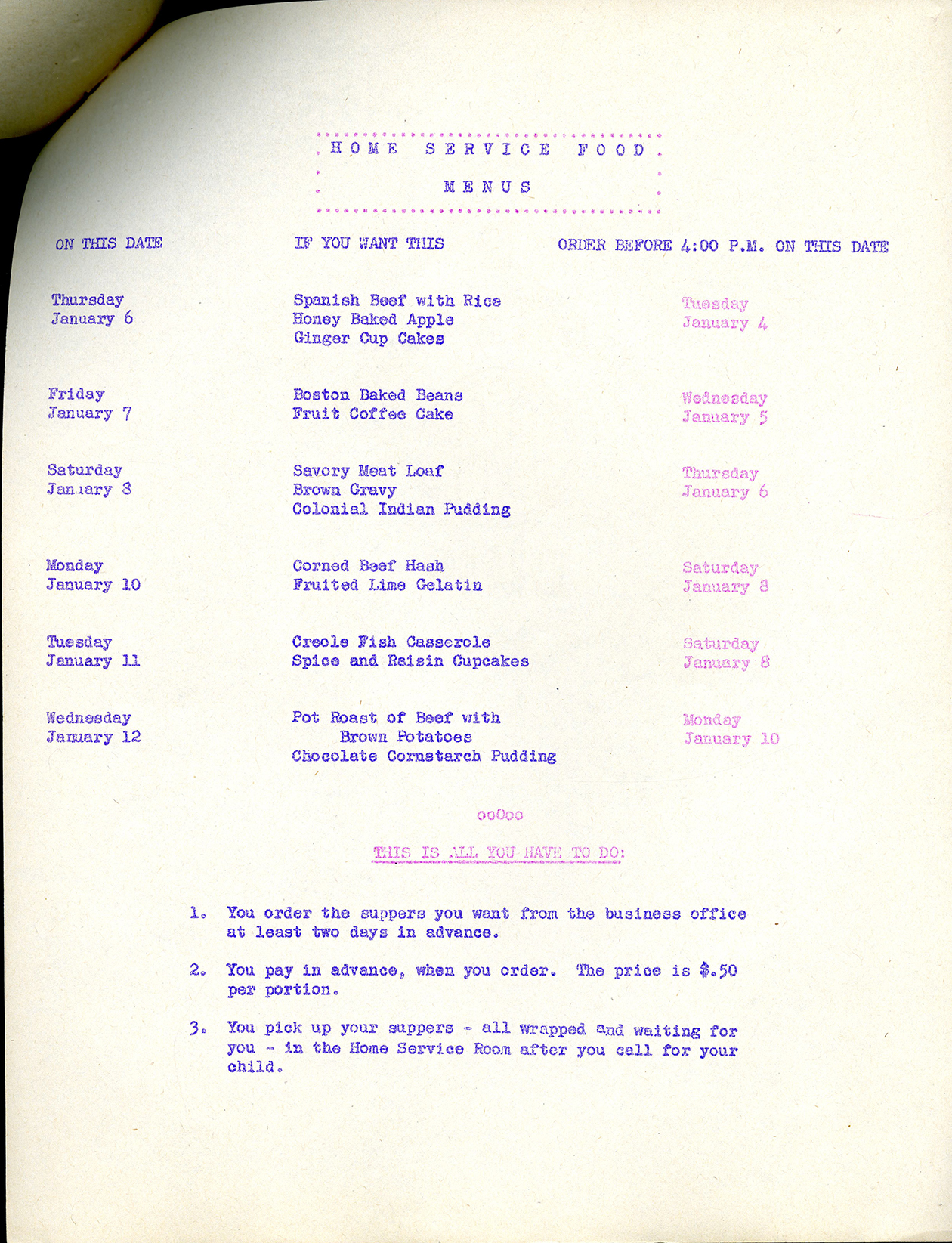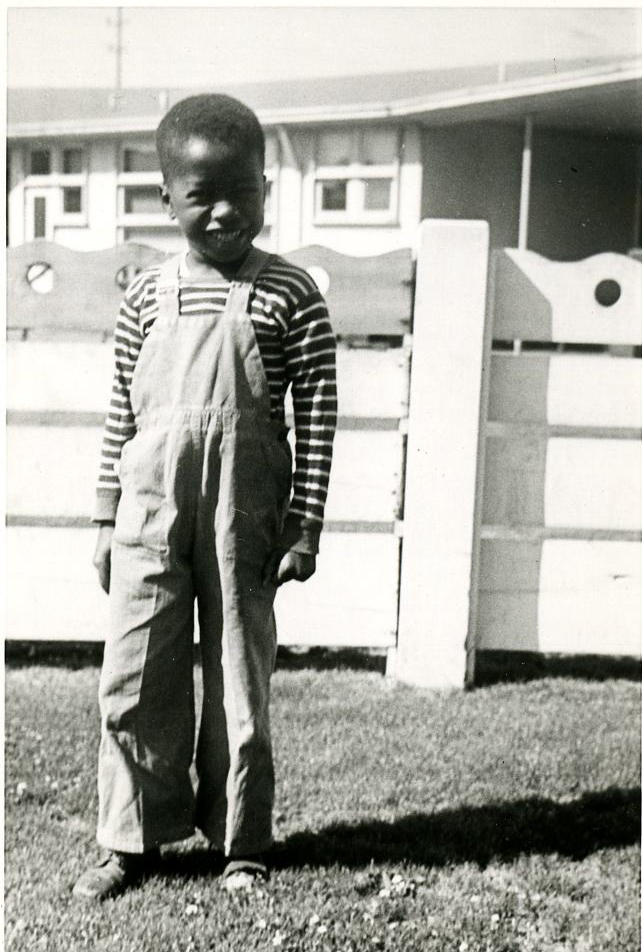|
At the entrance to the Oregon Shipyard Corporation’s (OSC) facilities on Portland’s Swan Island in the Willamette River, the company built a large, onsite daycare center for its workforce. Between November 1943 and September 1945, the Child Service Centers cared for over 4000 young children while their parents labored in the yards. The centers were the idea of Edgar F. Kaiser, vice-president and general manager of Kaiser Shipyards—the parent company of OSC. Kaiser saw the centers as a solution to the childcare problem faced by his workers, especially by the thousands of women who were recruited to the shipyards during World War II. As a result, the onsite daycare centers reduced absenteeism and improved employee satisfaction. The shipbuilding industry, the federal government, educators, and parents collaborated on the planning and building of what would become an innovative endeavor in modern childcare. The construction of the centers was financed by the U.S. Maritime Commission, and much of the operating costs were supplemented by the Kaiser Shipyards. The centers became well known for their innovative approach to early childhood care and education. Parents' Magazine awarded the Centers its medal for Outstanding Service to Children in 1944. The Office of War Information, through a broadcast, newsreels, and a traveling photo exhibit, shared the story of the centers internationally. The war ended and the shipyards closed. After only twenty-two months of operation, the groundbreaking onsite childcare system that catered to the specific needs of working parents through innovative design and affordable access was shuttered. The building was demolished soon after to make room for industrial buildings. The images and documents on this page are part of the Mary Willett collection, Coll 366, held by the Oregon Historical Society Research Library. |
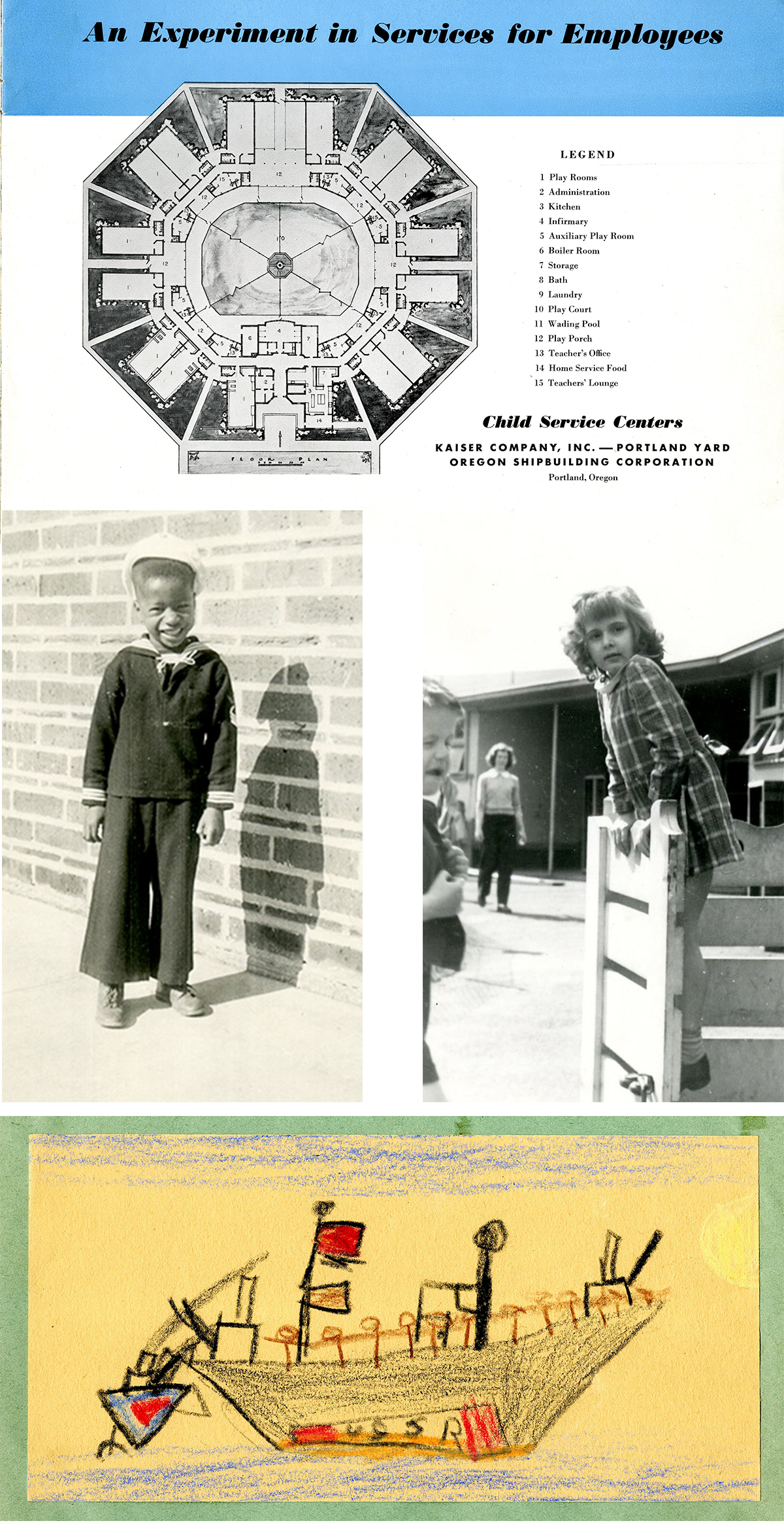 |
Slideshow of photographs from the Mary Willett collection (click)
